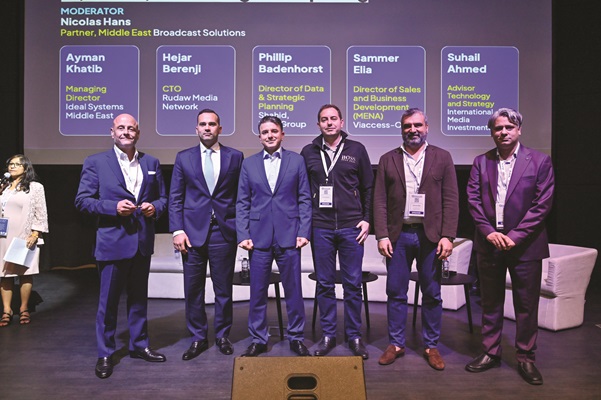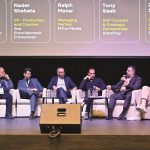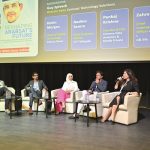How does the broadcast industry navigate unprecedented levels of technological innovation? Has AI affected the way content is created and streamed? Where do IP standards feature in the decision-making process for audience personalisation and to future-proof content? CTOs gathered at the ASBU BroadcastPro Summit to discuss these topics in greater detail.
Technology in the broadcast industry is evolving faster than video can be transmitted over high-fidelity lines. Innovations in other areas of communications are permeating this industry as well, with AI and cloud solutions enabled by edge computing.
In a highly engaging panel discussion titled Broadcast Tech Trends: IP, Cloud, AI, and Edge Computing at the ASBU BroadcastPro Summit, specialists in the MENA broadcast industry came together to lead a discussion on what works, what will become challenging and how we all must foray into the next generation of broadcast.
The panellists were Ayman Khatib, Managing Director, Ideal Systems Middle East; Hejar Berenji, CTO, Rudaw Media Network; Phillip Badenhorst, Director of Data & Strategic Planning, Shahid, MBC Group; Sammer Elia, Director of Sales and Business Development (MENA), Viaccess-Orca (VO); and Suhail Ahmed, Advisor Technology and Strategy, International Media Investments (IMI). The discussion was steered and moderated by Nicolas Hans, Partner, Middle East, Broadcast Solutions.
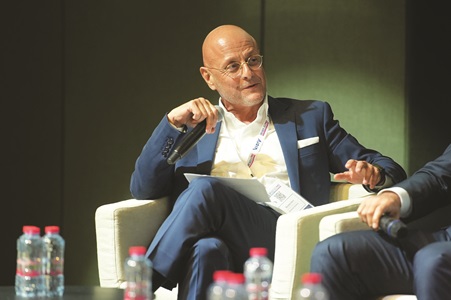
Hans, Partner, Middle East, Broadcast Solutions.
Hans opened the discussion by pointing out how the first anniversary of OpenAI’s ChatGPT was a few days away and reminded the audience that it had reached 1m users in just five days, 60 times faster than Facebook. To prepare for the panel, Hans said, he had asked Google’s AI tool Bard to list the top three things that had changed in the broadcast industry; it listed IP-based production, cloud and VR.
He then started the discussion with a question on what the panellists considered their biggest headache over the past year.
Challenges in broadcast innovation
Phillip Badenhorst noted that generative AI had changed things for him and the industry. He underscored how all verticals are impacted by the emergence of generative AI, in terms of how we approach and solve problems. He explained that Midjourney was already a defining force in media production, in considering how Marvel and Disney+ used it to generate the entire opening credits for the Secret Invasion television series. His point was that even a studio with a multimillion-dollar budget was using generative AI to create art.
 Suhail Ahmed cited transformation as his challenge of the year. IMI is in the process of moving all its media properties, including the National, Al Ain, Sky News Arabia and CNBC, to a single location. It has had to look at how to use IP, cloud and AI not just to improve the viewer experience, but also as newsroom productivity tools. The challenge with this transformation is the learning and migration curve for IMI, making education all the more essential as news and broadcast entities are run by people with traditional broadcast backgrounds.
Suhail Ahmed cited transformation as his challenge of the year. IMI is in the process of moving all its media properties, including the National, Al Ain, Sky News Arabia and CNBC, to a single location. It has had to look at how to use IP, cloud and AI not just to improve the viewer experience, but also as newsroom productivity tools. The challenge with this transformation is the learning and migration curve for IMI, making education all the more essential as news and broadcast entities are run by people with traditional broadcast backgrounds.
Sammer Elia moved the discussion towards innovation in the broadcast space. At Orange, the telco of which Viaccess-Orca is a part, the main focus is AI for IT Operations (AIOPs). Elia explained how AIOPs entails creating an analytics framework to reconcile and correlate data from the various building blocks of networks. Where in the past various vendors stepped in to connect the building blocks, AI, through AIOPs, now does the reconciliation. The learning curve for him was in how to create rules to improve predictive maintenance, automate scalability and improve content personalisation.
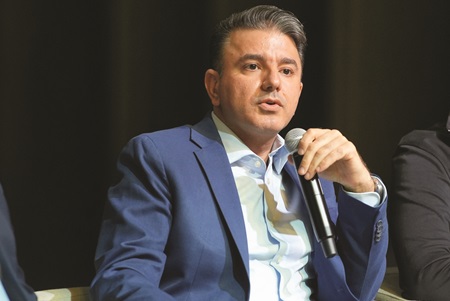
Hejar Berenji had similar views to Badenhorst. Since 2008, Rudaw Media Network has grown from a small media organisation in Kurdistan to a regional digital news media platform. Berenji commented that the one factor that keeps him awake at night is AI-generated deepfake content and misinformation. The risks of AI are paramount to Rudaw news operations, so he intends to focus on mitigating them.
Hans then asked Ayman Khatib for his insight with respect to the recent set-up and launch of Blinx. Khatib explained how the choice had been made to adopt a network device interface (NDI) as the core infrastructure of the new social media hub, to accommodate cloud production and remote workflows. He detailed how enabling users to access content from their homes or remote workstations, all while seamlessly interacting with the cloud, was critical to its operations.
Impact of IP standards on broadcast operations
Ahmed confirmed that this need for remote workflows made NDI the perfect match for Blinx, and explained why it’s important to build the data framework around it, but also pointed out that “for what we are trying to achieve at IMI, SMPTE ST 2110 is more relevant … however, within the deployment, we are also keeping an element of NDI and SDI”.
Ahmed opined that the role of Chief Technology Officer should give way to that of Chief Data Officer. “Chief Data Officers will start taking more of a pivotal role as modern media organisations continue being built, and every system we choose needs to provide us with some sort of valid input to our data ecosystems.”
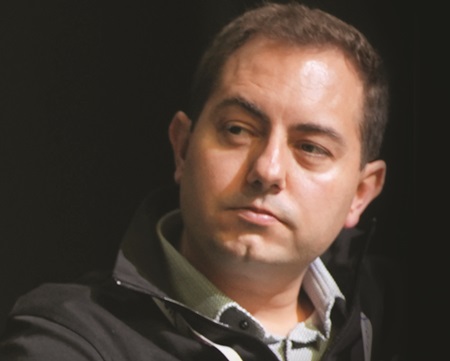
Badenhorst, with his data-specific role at MBC, was prompted by Hans to offer more insight into how the media network uses data to optimise scheduling and investments in content. He explained that Shahid uses the huge amount of media-related user data drawn from millions of customers to curate and create programmes.
“Content is one of the major costs for media companies. We have fairly complex clustering that we do across multiple dimensions. We classify every individual user based on their preferences and how they index towards many different taste clusters, telling us what content they like. We then consider our planning of titles coming up and ensure every individual at every point in time does not face a gap of two or three weeks when there’s no new title or no current running title that would appeal to that person. This allows us to prevent cancellations and churn actively. Then, on the purchasing side, we use the data and AI models we have developed over the last few years to see trends. We have trained AI models to help us predict how new titles will do before we green-light them.”
Elia explained how AI is used to combat CDN leeching. This latest form of piracy threatens operators’ revenues and is one of the most serious yet, as it poses a triple threat to their businesses. Using breaches in copyright systems technologies and the networks on which content is held, pirates place content links on other sites and networks, making it easy for them to monetise content delivery to unsuspecting users via advertising and brand displays. However, none of the revenue is passed back to the original IP- and content-owning networks.
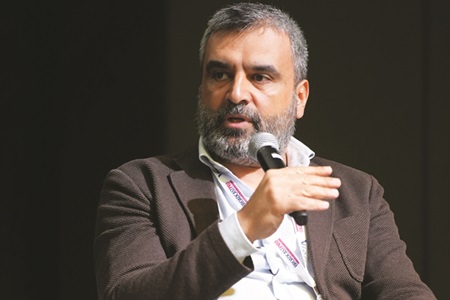
Elia said that Viaccess has employed protection applications to mitigate the leaching of CDN links. It does this by deploying a microservice with one of the CDN controllers, allowing any operator to assess the CDN leeching effect on their revenues. The next step is to take action by creating a token to accompany the CDN link, which is delivered to the requesting individual only, not to any other operator.
“We use AI to identify and connect the network to the user, and it can identify unscrupulous operators, making many of these mitigating processes more intelligent,” Elia explained.
IP standards and trends in migration
Steering the discussion towards IP infrastructure, Hans asked Berenji to elaborate on why Rudaw is building a UHD platform, a surprising move for a news organisation. He was bullish on this topic – “Why not?” – and asked why regional media needed to wait for Western entities to innovate, then copy them. His argument focused on the idea that local media entities have a deeper understanding of regional audiences, and that innovations in the media industry should therefore be primarily tailored to meet the specific needs of these local communities.
“Wherever you go in the world right now, you see entertainment channels, other channels, VOD platforms, conversations around Netflix, discussions around monetisation. However, look at the Middle East. What is happening around us? Is that news or entertainment? We generate over 65% of the news shown to people around the world, and news channels remain the most watched channels in our region. If people are watching news, and the news and information are affecting their daily life in the highest way possible, then why not show them news in the highest quality?”
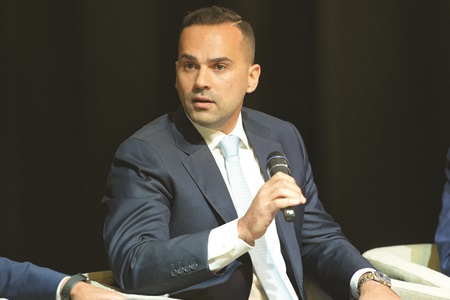
Khatib enjoyed this part of the discussion, as high-quality, uncompressed media delivery to the masses is something he champions due to his underlying belief that public broadcasters are the keepers of the memory of a nation, record keepers of its history.
“Going uncompressed or moving towards IP is a no-brainer,” he said. “Even though a lot of people say we are moving towards social media consumption, keeping history on record is just like storing music, where you have the original digital record. Yes, there is compressed music, but the actual record and the source is always uncompressed and in the highest quality possible.”
He added that building an infrastructure based on IP gives users the flexibility to have their processing done on-prem or remotely in a data centre. The link between these two locations becomes invisible to the end user.
Hybrid cloud solutions for enhanced resources
The discussion then moved to cloud solutions, as Hans raised the subject of multi-platform distribution with Ahmed of IMI, where cloud services are playing a big role. The underlying argument was that it is time for digital and broadcast departments to start talking to each other, and Hans asked him to provide an example of this.
Ahmed agreed that bridging the gap between the two newsroom styles is pivotal and that the ultimate end goal is a single pane or platform where journalists can deliver more rundowns, galleries and unique stories to digital platforms, and be able to curate those stories instead of just pushing what they’ve created for linear production.
Cloud-based solutions have proven beneficial for multi-channel and multi-platform content delivery, given the need from consumers for instant access on the go, whether in the form of news or entertainment. Rudaw Media Network has been such a platform from the start, and Berenji chimed in at this point to elaborate on how it manages this from an operational standpoint.
“Rudaw was already a multi-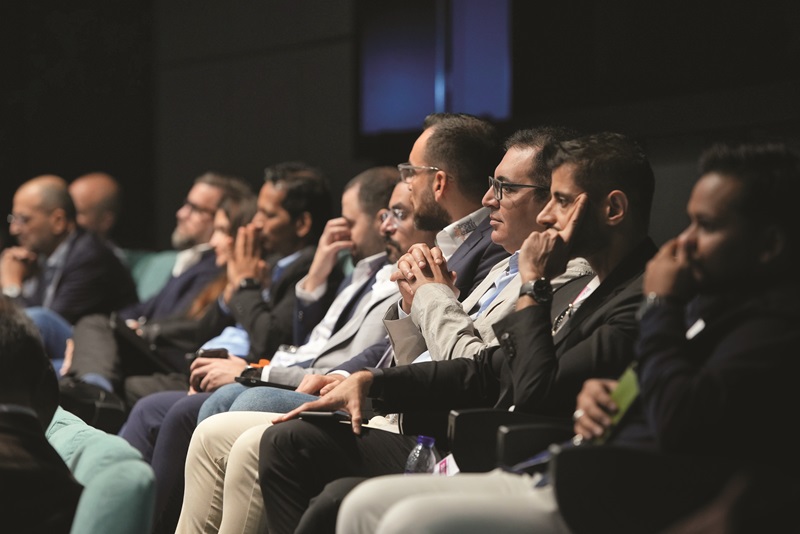 platform network at launch, and at the time we had the idea of using the experience multiple users have when consuming from large organisations like the BBC and others. We thought if we wanted to build that multi-media platform, we needed to have a cross-platform environment, which has two main streams: the intake and output. However, the output these days is that if the content is being prepared for TV, it will be solely a TV-related preparation. At the same time, for radio, it would be only audio and maybe digital audio. We knew, however, right at the start, that digital would play a huge role, even though we are still not using digital for monetisation.”
platform network at launch, and at the time we had the idea of using the experience multiple users have when consuming from large organisations like the BBC and others. We thought if we wanted to build that multi-media platform, we needed to have a cross-platform environment, which has two main streams: the intake and output. However, the output these days is that if the content is being prepared for TV, it will be solely a TV-related preparation. At the same time, for radio, it would be only audio and maybe digital audio. We knew, however, right at the start, that digital would play a huge role, even though we are still not using digital for monetisation.”
Berenji further explained that the primary goal is to provide news and information in an objective and expedient manner, while also building brand recognition. He emphasised the importance of using channel-specific templates to ensure that the content doesn’t appear to be carelessly presented to the audience, but rather thoughtfully tailored to meet its specific needs.
Broadcast 2.0: Future technologies in broadcast
The broader discussion shifted naturally towards Broadcast 2.0, a significant leap in the evolution of broadcasting technology and media platforms that blends the traditional aspects of broadcasting with the advancements of the digital age. At the core of Broadcast 2.0, explained Elia from VO, are cutting-edge technologies such as hyper-personalised content through data analytics and machine learning to tailor viewing experiences to individual preferences; as well as exponential improvements in audiovisual quality, with high-definition video and superior audio formats becoming the norm. Moreover, Broadcast 2.0 promises multi-platform accessibility, ensuring content is available across various devices and platforms.
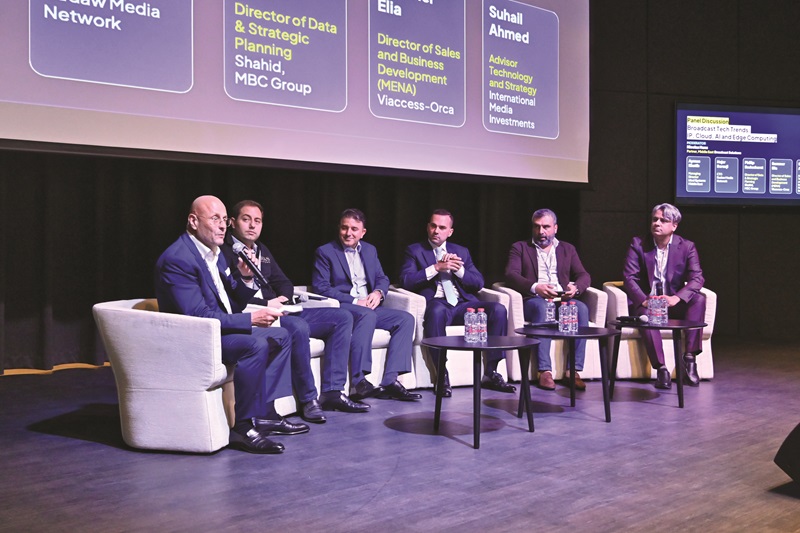 Elia elaborated that “Broadcast 2.0 is the dogma behind taking back the ownership of your data from social media platforms”. He added that quality of service also comes under this banner and underscored how Broadcast 2.0’s true focus is on user data, to help editorial teams serve relevant content to consumers.
Elia elaborated that “Broadcast 2.0 is the dogma behind taking back the ownership of your data from social media platforms”. He added that quality of service also comes under this banner and underscored how Broadcast 2.0’s true focus is on user data, to help editorial teams serve relevant content to consumers.
Hans turned the conversation to Khatib, remarking how Broadcast 2.0 encompasses IP, AI and cloud, and asked what he would recommend to broadcasters. Khatib pointed out that there was no real single generic answer, as what broadcasters want to deliver varies based on their audience. However, these three technologies are indeed where broadcasters need to look for innovation.
“The infrastructure – for example, let’s take IP. If someone today told me that they don’t recommend building an infrastructure based on IP, it’s equivalent to somebody back in the day saying we should not change the telephone switchboard from a digital switchboard to an IP switchboard, which we use today.”
Expanding on the topic, he explained that the current forms of AI – reactive AI, generative AI and GPT models – are effective in outlining storylines, conceptualising media content ideas and aiding in infrastructure design. As more broadcasters adopt these technologies, their AI systems will become adept at identifying content through probabilistic measures. However, he anticipates a transition to a more advanced form of “true” AI which will mimic the human brain’s cognitive processes, moving beyond mere probabilistic reactions.
A new era for broadcast CTOs
The conversation concluded with Berenji urging regional CTOs to unite and exchange ideas, emphasising the importance of a distinct identity. He highlighted the need for a shift from the traditional role of CTOs, who are often hastily tasked with launching new channels, to a more visionary approach. He appealed to CTOs in the Middle East to envision the future of broadcasting over the next decade, during which AI will play a significant role alongside traditional linear TV, with the youth of the Middle East continuing to be major social media influencers.


































































